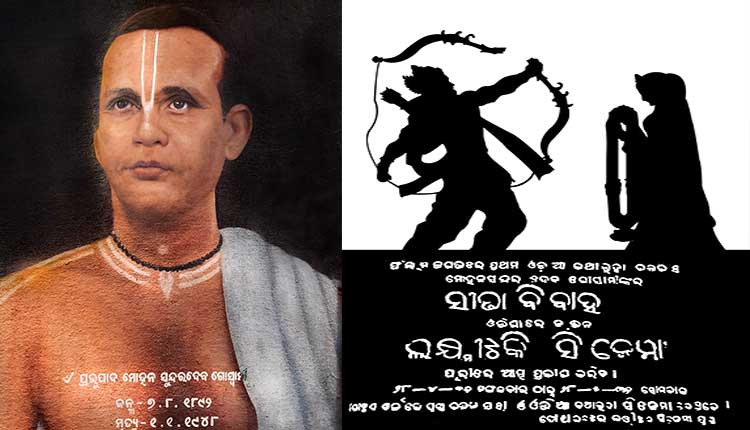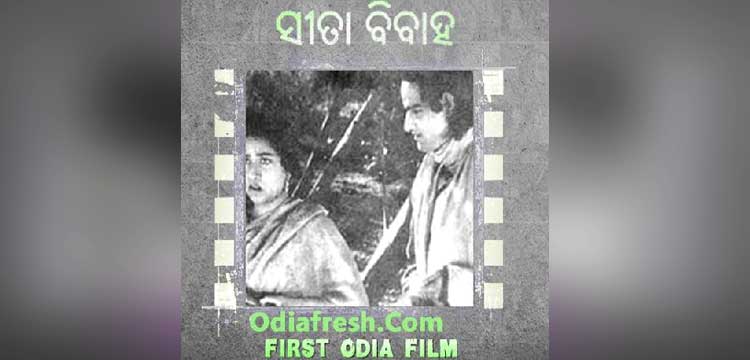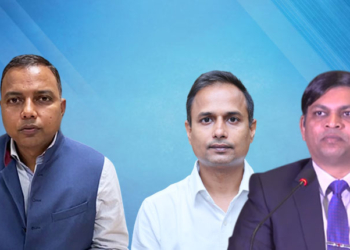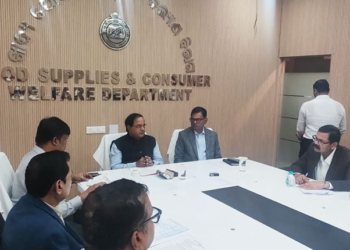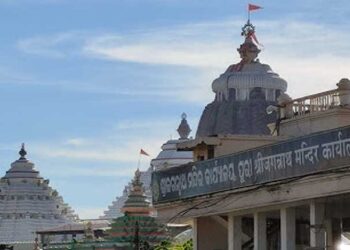April 28, 1936, marked a significant milestone in Odisha’s cinematic history with the release of ‘Sita Bibaha’, the first Odia film, at Laxmi Talkies in Puri. This pioneering movie, which tells the story of Sita’s marriage, paved the way for the growth of the Odia film industry.
Just as Dadasaheb Phalke’s Raja Harishchandra laid the foundation for India’s film industry, Mohan Sundar Deb Goswami’s ‘Sita Bibaha’ marked a new era in Odisha’s cinematic landscape as a whole. Goswami’s groundbreaking work in directing ‘Sita Bibaha’ helped establish Odia cinema as a distinct entity and earned him the revered title of Father of Odia cinema. And his legacy continues to inspire generations of filmmakers and cinephiles alike.
1936 was a pivotal year for Odisha, marked by significant developments on both political and cultural fronts. The state was formed as a separate province based on language, and the release of ‘Sita Bibaha’ coincided with the birth anniversary of Utkal Gourav Madhusudan Das, a prominent figure in Odisha’s history.
Today, Ommcom News pays tribute to the legendary director Mohan Sundar Deb Goswami, fondly known as the Father of Odia cinema. To celebrate his enduring legacy, we are bringing you some fascinating, lesser-known facts about Goswami, who paved the way for Odia cinema’s rich history.
Let’s take a peek into the life of legendary director Goswami, revealing a treasure trove of fascinating facts.
- Inspired by Charlie Chaplin’s films, he conceptualised making a movie of his own. After marriage, Goswami formed a Rasadal called Sree Radha Kunjabehari Rasadala and penned over 25 dance dramas, showcasing his creative prowess.
- Goswami’s determination to bring ‘Sita Bibaha’ to life was nothing short of remarkable. In an era when Odisha lacked basic filmmaking infrastructure, he took on the monumental task of adapting the epic Ramayana for the silver screen. Undeterred by the challenges, Goswami invested his heart and soul into the project, mortgaging his properties and taking loans to fund the film.
- He spent Rs 29,781 and 10 Ana on the project and managed to release the film on the birth anniversary of Utkal Gourav Madhusudan Das. He found it difficult to get an actress to play Sita’s character as acting was looked down upon in society at that time.
- Sita Bibaha featured 14 songs with impressive backdrops and dance sequences. Some popular tracks include ‘Debanka Tarane, Danuja Marane’, ‘Apurba Kumar Tripura Sundari’, ‘Kali Dekhithili Madhura Chaliki’ and ‘Kahinki Go Priya Sakhi’.
- Although the film’s first screening took place in Kolkata on March 25, 1936, April 28, 1936, is celebrated as a red-letter day for Odia cinema. It was on this day that Sita Bibaha premiered in the newly formed state of Odisha, bringing the magic of cinema to the people.
- The film’s release at Laxmi Talkies in Puri and Sri Sitaram Vilas Talkies (SSVT) in Berhampur, the state’s first cinema hall, set the stage for its widespread popularity. It was also screened at prominent venues like Cinema Palace and Akme Theatre in Cuttack, Ramai Talkies in Balangir, and Samlai Talkies in Sambalpur.
- The Radhakishen Chamelia touring company played a crucial role in taking the film to every corner of the state, making it a truly statewide phenomenon.
- However, finding an actress to play the iconic role of Sita proved to be a daunting task. In a society where acting was often stigmatised, Goswami faced significant resistance in convincing women to join the film industry.
- According to records, Makhanlal, who played Ram, received Rs 120, while Adwaita Charan Mohanty, who played Laxman, was paid Rs 35 as a conveyance fee. Interestingly, Miss Prabhabati, who portrayed Sita, received the highest payment of Rs 150. The film’s commercial success was notable, with a 54-day run in Puri.
- The screening of ‘Sita Bibaha’ in Puri was a grand affair, drawing audiences from far-flung corners of the state. Filmgoers would arrive in the holy city a day before the movie, carrying their luggage and eagerly awaiting the cinematic tribute to Lord Ram. As the iconic song “Debanka Tarane, Danuja Marane’ played on screen, women would shower flowers and bow their heads in reverence. The audience would rise to their feet, filling the theatre with ululations, showcasing their deep devotion to the legendary deity.
- Goswami was a multifaceted artist, skilled in playing 27 musical instruments, including the harmonium, tabla, mridanga, jodi nagra, sitar, and flute.
 From his remarkable talent in playing 27 musical instruments to his inspiration drawn from Charlie Chaplin’s films, Goswami’s story is one of passion, creativity, and innovation. His formation of the Sree Radha Kunjabehari Rasadala and authorship of over 25 dance dramas further showcase his artistic brilliance. These lesser-known aspects of his life offer a glimpse into the making of a cinematic pioneer who left an indelible mark on Odia cinema.
From his remarkable talent in playing 27 musical instruments to his inspiration drawn from Charlie Chaplin’s films, Goswami’s story is one of passion, creativity, and innovation. His formation of the Sree Radha Kunjabehari Rasadala and authorship of over 25 dance dramas further showcase his artistic brilliance. These lesser-known aspects of his life offer a glimpse into the making of a cinematic pioneer who left an indelible mark on Odia cinema.
By Rashmi Rekha Das




